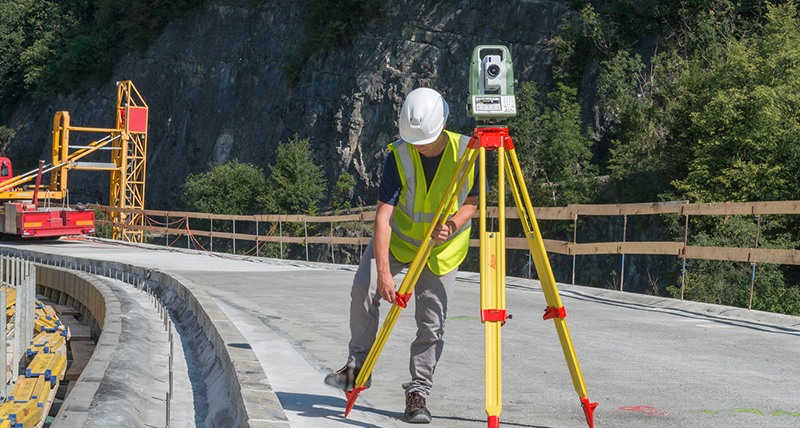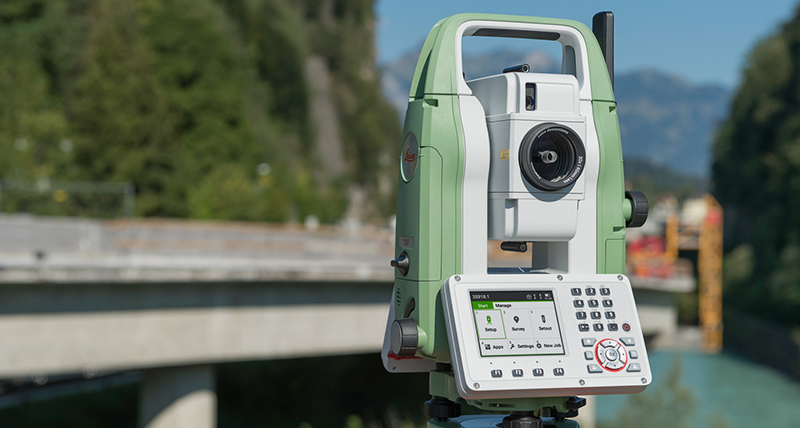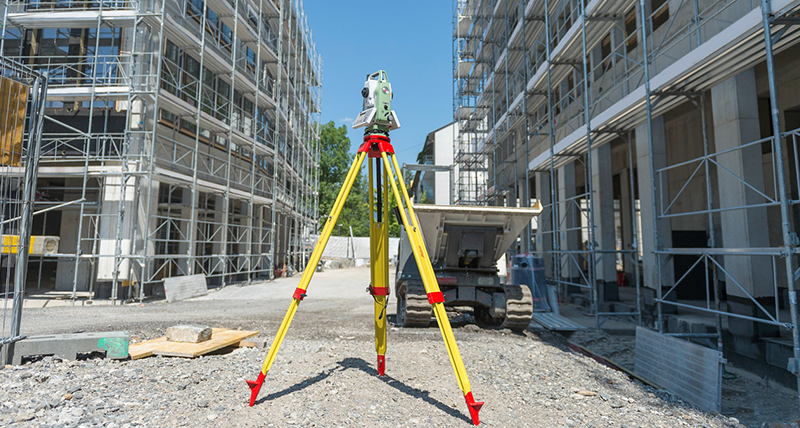Introducing the newest generation of manual total stations
Feature

Author: Monica Miller Rodgers
The newest generation of manual total stations, the Leica FlexLine total stations, was recently released, replacing the former FlexLine instruments that were launched more than a decade ago. To learn more about these latest innovations, Reporter sat down with Hans Martin Zogg, business director for total stations, to discuss what’s new with these total stations.
The new Leica FlexLine Series are Leica Geosystems latest manual total stations. So, what’s new about them?

The new FlexLine instruments, made up of the Leica TS03, TS07 and TS10, form the newest generation of manual total stations. They replace the former FlexLine total stations and the Leica Viva TS11 manual total station. Allow me to explain what makes these instruments strong and special. It is the durability of our total stations. The durability is based on the quality of Geosystems manual total stations. We at Geosystems have years of experience in building total stations. The quality of our total stations is a condensate of our entire knowhow. This starts with the development of our total stations and continues with the selection of the right materials and suppliers. Furthermore, during the production process, we do a lot of quality testing procedures that guarantee the highest quality of our total stations.
With the new FlexLine series, we introduced an enhanced environmental protection. The new FlexLine instruments deliver the precision and accuracy not just under standard conditions but also under extreme conditions and over the entire product lifetime. All these aspects contribute to the durability of our total stations.
Another important key feature of our FlexLine total stations is the trouble-free use. Naturally this is also connected to the previously mentioned quality standards. Our customers can rely on our instruments. We are well aware of their extremely demanding measurement and layout tasks they have to tackle on an everyday basis. So, the reliability, precision and accuracy have to be on the highest level with every instrument we produce. Besides durability and trouble-free use, the measurement and layout speed are crucial for a total station. Our new FlexLine instruments are the industry’s fastest manual total stations to perform these tasks. The ergonomic improvements, enabling our users to operate the instruments, are immense. Endless fine drives on both sides and a trigger key to begin the measurements on the side are just the tip of the iceberg. The included software contributes significantly to the speed of measurements and layout. The TS03 and TS07 are equipped with the super intuitive Leica FlexField field software. Leica Captivate comes with the TS10 and enables the support of 3D data and large data.
The new Leica TS07 and TS10 have an integrated 4G modem, enabling the availability of mobile data. Being able to manage last minute design data changes from the office out in the field is becoming more and more important. The new manual total stations feature the world’s first AutoHeight feature to measure the instrument height automatically. This makes these instruments unique and brings time savings, improved accuracy, no mistakes and no need for additional equipment. The user does not need to waste time with the traditional tape measure when defining the instrument height.
What is the difference between the three new FlexLine instruments?

The new FlexLine series consists of three models – the TS03, TS07 and TS10. One of the key differentiators is the field software, running on the instruments. The Leica FlexField software is found on the TS03 and TS07. Leica Captivate runs on the TS10.
The TS03 is the entry-level instrument with basic functionalities and a black-and-white screen. The TS07 is the mid-range total station with colour-and-touch screen, and the possibilities to add options such as the AutoHeight feature or the 4G mode.
The TS10 is the high-end manual total station with integrated AutoHeight. The 4G modem is available as an option.
All FlexLine instruments feature premium design with an enhanced environmental protection and the IP66 rating coherence.
Why did you introduce new models to the market?

The previous series of manual total stations have been successfully on the market for more than a decade and there is need in the market to introduce this new series to provide our customers with the latest technological advances and meet the demand and expectations from today’s market situation. Another reason is we also want to run our field software, Captivate, on the manual total stations so that customers using manual total stations can also benefit from the latest field software.
You offer calibration certificates. Why is this so important?

The overall demand for calibration certificates confirming the measurement quality of surveying equipment is increasing as more and more surveying companies or contractors are becoming ISO 9001 certified. Therefore, there is a need to periodically confirm the accuracy of the measurement equipment. Calibration certificates for FlexLine total stations can be created and issued in audited service stations through a global network. Local authorised service partner locations are audited on a regular basis by Leica Geosystems headquarters to ensure they can issue calibration certificates on its behalf, maintaining the same strict standards.
Why should customers consider the new Leica FlexLine series of total stations?
Although the initial purchase price of competitors’ instrument may be lower than FlexLine series manual total stations, over the lifetime of the total station, the total cost of ownership will be lower for the end user. This is considering all aspects of owning and using a total station, for example, income through productivity, planned costs, such as service costs and unplanned costs due to downtime (due to poor reliability) and unforeseen repairs. Furthermore, the availability of Customer Care Packages (CCP) enables to have predictable costs over the lifetime of the instrument. This is especially of interest to keep costs under control. Geosystems instruments maintain their value and ensure and trouble-free use over the entire product lifetime.
Our Latest News
Contact Leica Geosystems
Want to learn more? We're here to answer your questions.
Want to learn more? We're here to answer your questions.
























